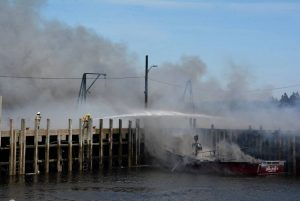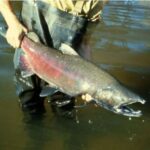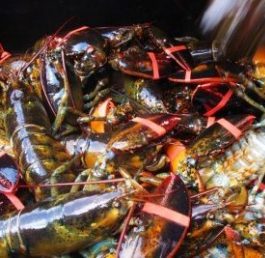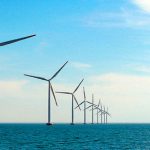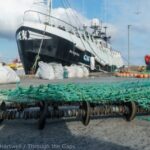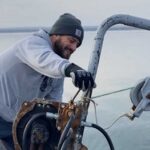Tag Archives: Molly Dischner
Listen to the Bristol Bay Fisheries Report July 1, 2016
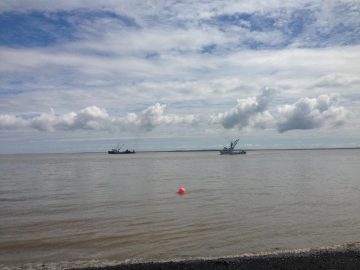 Tonight a Ugashik set-netter tells us he’ll fish despite some stormy weather this weekend, Area Manager Paul Salomone updates on Egegik and Ugashik numbers, and we check-in on a Kuskokwim dilemma. The total run to Bristol Bay hit 4.5 million on Thursday – 40 million or so left to go. Fish and Game has a countdown to the two billionth salmon caught in Bristol Bay, and we’re closing in. Thursday’s catch of 475,000 brought the season total to about 3 million, and some strong Naknek-Kvichak escapements let to an opener there sooner than planned. While those eastside fisherman were busy with their nets, we heard about the nets in the Egegik and Ugashik districts, and the wind blowing at Ugashik Bay. Plus, a check on the Kuskokwim, where no buyer means no commercial fishing, despite a healthy enough run. To listen, click here 16:15
Tonight a Ugashik set-netter tells us he’ll fish despite some stormy weather this weekend, Area Manager Paul Salomone updates on Egegik and Ugashik numbers, and we check-in on a Kuskokwim dilemma. The total run to Bristol Bay hit 4.5 million on Thursday – 40 million or so left to go. Fish and Game has a countdown to the two billionth salmon caught in Bristol Bay, and we’re closing in. Thursday’s catch of 475,000 brought the season total to about 3 million, and some strong Naknek-Kvichak escapements let to an opener there sooner than planned. While those eastside fisherman were busy with their nets, we heard about the nets in the Egegik and Ugashik districts, and the wind blowing at Ugashik Bay. Plus, a check on the Kuskokwim, where no buyer means no commercial fishing, despite a healthy enough run. To listen, click here 16:15
Bristol Bay Fishermen’s Association seeks more members, better payouts
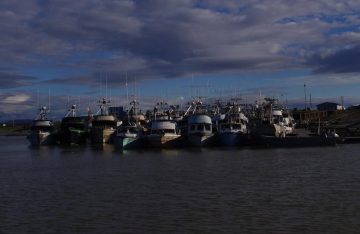 The name isn’t the only thing changing for the group formerly called the Alaska Independent Fishermen’s Marketing Association. Now dubbed the Bristol Bay Fishermen’s Association, the organization is shifting gears to focus on fair and consistent payment for its membership. “The mission [of] the BBFA is to achieve a fair price on the fish tickets when we go fishing,” BBFA member David Kopra said. “That’s our mission, that’s our purpose, that’s why we’re here.” Kopra, who has been a commercial fisherman in Bristol Bay for 37 years, said that the BBFA needs more fishermen to participate in order to be effective. “I really want us all on the same page when it comes to our price negotiations. We need to stick together,” Kopra said. “The processors stick together. If you’ve noticed, their prices are always the same.” Listen, read the rest here 13:45
The name isn’t the only thing changing for the group formerly called the Alaska Independent Fishermen’s Marketing Association. Now dubbed the Bristol Bay Fishermen’s Association, the organization is shifting gears to focus on fair and consistent payment for its membership. “The mission [of] the BBFA is to achieve a fair price on the fish tickets when we go fishing,” BBFA member David Kopra said. “That’s our mission, that’s our purpose, that’s why we’re here.” Kopra, who has been a commercial fisherman in Bristol Bay for 37 years, said that the BBFA needs more fishermen to participate in order to be effective. “I really want us all on the same page when it comes to our price negotiations. We need to stick together,” Kopra said. “The processors stick together. If you’ve noticed, their prices are always the same.” Listen, read the rest here 13:45
Efforts to launch local processors in two Bristol Bay communities may finally be coming to fruition.
 For decades, many of the processors in Bristol Bay have been large companies, with offices in Washington and parent companies in foreign countries. But two small communities are developing locally-owned processing plants. Bristol Bay’s fishing communities have long been dependent on the companies that turn raw fish into a sell-able product and get it shipped out of the bay. The communities of Port Heiden and Levelock want to take on that role themselves and – hopefully – keep more of the decisions, and the benefits, local. “We wanted to start a locally tribally owned processing plant so that we could create a longer season for our fishermen, also to have our fishermen fish closer to home so they don’t have to go all the way up to Ugashik to fish, and to provide them with a higher price for their fish because we’ll be doing direct marketing and have a higher quality product,” she said. “That will mean more jobs and more pay for the fishermen.” Audio, read the rest here 19:38
For decades, many of the processors in Bristol Bay have been large companies, with offices in Washington and parent companies in foreign countries. But two small communities are developing locally-owned processing plants. Bristol Bay’s fishing communities have long been dependent on the companies that turn raw fish into a sell-able product and get it shipped out of the bay. The communities of Port Heiden and Levelock want to take on that role themselves and – hopefully – keep more of the decisions, and the benefits, local. “We wanted to start a locally tribally owned processing plant so that we could create a longer season for our fishermen, also to have our fishermen fish closer to home so they don’t have to go all the way up to Ugashik to fish, and to provide them with a higher price for their fish because we’ll be doing direct marketing and have a higher quality product,” she said. “That will mean more jobs and more pay for the fishermen.” Audio, read the rest here 19:38
Fishermen’s association changes name to reflect Bristol Bay focus on their bottom line.
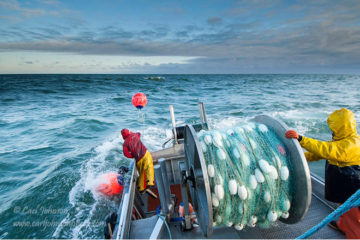 The Alaska Independent Fishermen’s Association recently re-named itself the Bristol Bay Fishermen’s Association, and is now looking to boost it’s efforts with more members and a focus on their bottom line. Naknek fisherman Everett Thompson has been a member for several years, and joined the nine-member board last fall. “It’s a competitive business and if we stick together we could do great things,” he said. “With building up our membership we can do even more.” The organization is hoping that by doing more it can have a stronger impact on prices. Read the rest here 07:55
The Alaska Independent Fishermen’s Association recently re-named itself the Bristol Bay Fishermen’s Association, and is now looking to boost it’s efforts with more members and a focus on their bottom line. Naknek fisherman Everett Thompson has been a member for several years, and joined the nine-member board last fall. “It’s a competitive business and if we stick together we could do great things,” he said. “With building up our membership we can do even more.” The organization is hoping that by doing more it can have a stronger impact on prices. Read the rest here 07:55
What the fish in Alaska’s oceans are eating — and what that can tell us
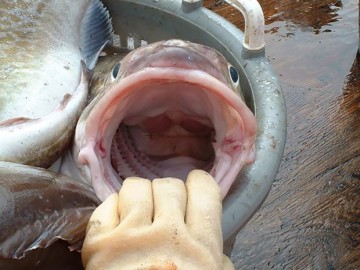 Ever wonder what eats the salmon that don’t make it back to Bristol Bay? Or what fish are cannibals? A new database released online in late March by the National Marine Fisheries Service offers a glimpse into fish diets, based on decades of study of their stomach contents. It ranges from commonly known species like halibut, Pacific cod and pollock, to lesser-known fish, like sculpins, snailfish and even alligatorfish. Herring and salmon also make an appearance, although they aren’t the focus. Kerim Aydin, a supervisory fisheries biologist at the in Seattle, said the database includes collections that have been in the works since the 1980s, and is largely focused on commercial groundfish species. Read the rest here 10:55
Ever wonder what eats the salmon that don’t make it back to Bristol Bay? Or what fish are cannibals? A new database released online in late March by the National Marine Fisheries Service offers a glimpse into fish diets, based on decades of study of their stomach contents. It ranges from commonly known species like halibut, Pacific cod and pollock, to lesser-known fish, like sculpins, snailfish and even alligatorfish. Herring and salmon also make an appearance, although they aren’t the focus. Kerim Aydin, a supervisory fisheries biologist at the in Seattle, said the database includes collections that have been in the works since the 1980s, and is largely focused on commercial groundfish species. Read the rest here 10:55
Bristol Bay buyers say they can handle full 2016 sockeye run
A survey of the 12 primary processors in Bristol Bay says that they should be able to handle more sockeye than are forecast to be caught this summer. But that’s not a guarantee that fishermen won’t be placed on limits. Each winter, the Alaska Department of Fish and Game surveys the main Bristol Bay processors to get a sense of how many fish they can handle. This year, the major processors, which operate 16 facilities, said they can process 35.5 million fish. That’s more than the 29.5 million harvest forecast. Read the article, Click here 12:50
Fishermen, processors respond to fish tax proposal
 Despite acknowledging the need for more revenue, fisheries stakeholders raised lots of questions about the governor’s plan to increase state fisheries taxes this week. To help fill the state’s budget gap, Alaska Governor Bill Walker has asked legislators to consider a variety of tax increases – including by one percent. During a House Fisheries Committee hearing on Thursday, state tax director Ken Alper explained that the increase, estimated to bring in an additional $18.4 million, essentially would make fish revenue match the cost of fisheries management. Read the rest here 13:28
Despite acknowledging the need for more revenue, fisheries stakeholders raised lots of questions about the governor’s plan to increase state fisheries taxes this week. To help fill the state’s budget gap, Alaska Governor Bill Walker has asked legislators to consider a variety of tax increases – including by one percent. During a House Fisheries Committee hearing on Thursday, state tax director Ken Alper explained that the increase, estimated to bring in an additional $18.4 million, essentially would make fish revenue match the cost of fisheries management. Read the rest here 13:28
Bristol Bay backlash after Walker taps Ruffner to replace Johnson on Fish Board
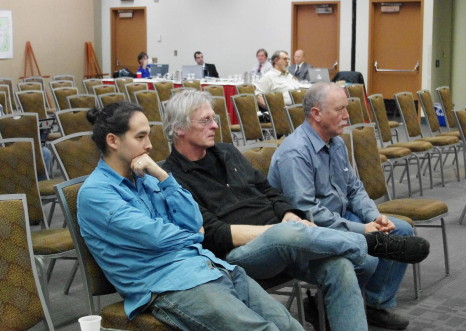 Governor Bill Walker announced five nominations to the state board of Fish and Game on Tuesday. On the list again this year for a Fish Board seat is Robert Ruffner of Kenai, who would replace Fritz Johnson, a commercial fisherman from Dillingham. If confirmed, it will be the first time the Fish Board would not have a member from Bristol Bay. When Governor Bill Walker announced five appointments to the state boards of fish and game on Feb. 2, he named a Soldotna scientist for the seat currently held by Dillingham’s Fritz Johnson. That was a surprise for many in the Bay,,, Audio, Read the rest here 11:02
Governor Bill Walker announced five nominations to the state board of Fish and Game on Tuesday. On the list again this year for a Fish Board seat is Robert Ruffner of Kenai, who would replace Fritz Johnson, a commercial fisherman from Dillingham. If confirmed, it will be the first time the Fish Board would not have a member from Bristol Bay. When Governor Bill Walker announced five appointments to the state boards of fish and game on Feb. 2, he named a Soldotna scientist for the seat currently held by Dillingham’s Fritz Johnson. That was a surprise for many in the Bay,,, Audio, Read the rest here 11:02
A new report is a reminder of what many Alaskans already know: seafood is a big industry in the state.
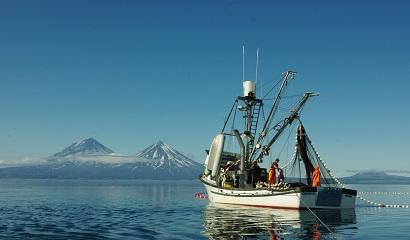 ASMI Communications Director Tyson Fick said his organization commissioned the McDowell group to update a study on the role seafood plays in Alaska, and America’s, economy. “There’s more labor income from seafood than from tourism and mining combined, which is pretty substantial, and certainly very, very important in places where seafood is primary, like Bristol Bay,” Fick said. The report says the 60,000 workers in Alaska’s seafood industry earn $1.6 billion per year. That includes the equivalent of about 4,650 full time jobs in Bristol Bay. Audio, read the article here 11:49
ASMI Communications Director Tyson Fick said his organization commissioned the McDowell group to update a study on the role seafood plays in Alaska, and America’s, economy. “There’s more labor income from seafood than from tourism and mining combined, which is pretty substantial, and certainly very, very important in places where seafood is primary, like Bristol Bay,” Fick said. The report says the 60,000 workers in Alaska’s seafood industry earn $1.6 billion per year. That includes the equivalent of about 4,650 full time jobs in Bristol Bay. Audio, read the article here 11:49
Seafood development association shifts focus away from Pebble Mine
 The Bristol Bay Regional Seafood Development Association took another step away from prior efforts to fight Pebble Mine with the election of a new board president. The fishing association, or BBRSDA, is funded by a 1 percent tax on Bristol Bay drift fishermen. Historically it has opposed , including spending at least a fifth of its budget on sustainability and anti-mining efforts over the past several years and a policy statement adopted in 2008 that opposed large-scale mining. But that focus has been shifting away from that work. Read the rest here 21:30
The Bristol Bay Regional Seafood Development Association took another step away from prior efforts to fight Pebble Mine with the election of a new board president. The fishing association, or BBRSDA, is funded by a 1 percent tax on Bristol Bay drift fishermen. Historically it has opposed , including spending at least a fifth of its budget on sustainability and anti-mining efforts over the past several years and a policy statement adopted in 2008 that opposed large-scale mining. But that focus has been shifting away from that work. Read the rest here 21:30
Bristol Bay Fisheries Report July 23, 2015
There’s an emergency Board of Fisheries meeting tomorrow to discuss who can fish in the Togiak District when, and what’s coming for the Bristol Bay meeting later this fall, plus – more fishermen unhappy about prices. Listen to the Bristol Bay Fisheries Report here 23:11
Bristol Bay fishery update – Monday July 20, 2015
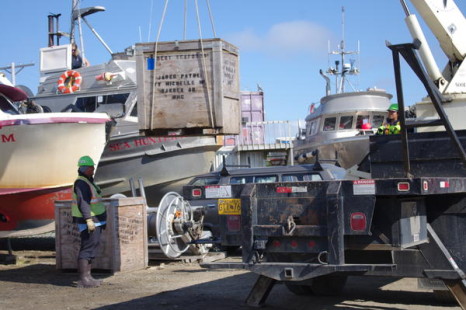 Bristol Bay fishermen caught a million sockeye on Sunday, bringing the total catch this summer to almost 33 million. The total Bristol Bay sockeye run is now estimated at about 47 million fish, near the pre-season forecast, which called for about 53 million fish. The strongest catches Sunday came out of the Naknek-Kvichak District, where 535,000 fish were caught. Egegik fishermen caught 264,000 Sunday, and Ugashik fishermen landed 188,000. Sunday’s Nushagak harvest was 108,000; no fish in Togiak. Sunday’s catches showed a decline,,, Read the rest here 18:51
Bristol Bay fishermen caught a million sockeye on Sunday, bringing the total catch this summer to almost 33 million. The total Bristol Bay sockeye run is now estimated at about 47 million fish, near the pre-season forecast, which called for about 53 million fish. The strongest catches Sunday came out of the Naknek-Kvichak District, where 535,000 fish were caught. Egegik fishermen caught 264,000 Sunday, and Ugashik fishermen landed 188,000. Sunday’s Nushagak harvest was 108,000; no fish in Togiak. Sunday’s catches showed a decline,,, Read the rest here 18:51
Bristol Bay Fisheries Report July 17, 2015
 The fishery is usually winding down this time of year, but folks on the east side say catches – and the wind – is going strong. Area Managers Travis Elison and Paul Salomone talk about fishing in the Naknek-Kvichak, Egegik and Ugashik Districts, the port in Naknek is busy, and fishermen talk about the wind and their limits. Listen to the report here 08:15
The fishery is usually winding down this time of year, but folks on the east side say catches – and the wind – is going strong. Area Managers Travis Elison and Paul Salomone talk about fishing in the Naknek-Kvichak, Egegik and Ugashik Districts, the port in Naknek is busy, and fishermen talk about the wind and their limits. Listen to the report here 08:15
Wait period to fish Naknek-Kvichak, Egegik districts waived, strong catches continue in much of Bristol Bay.
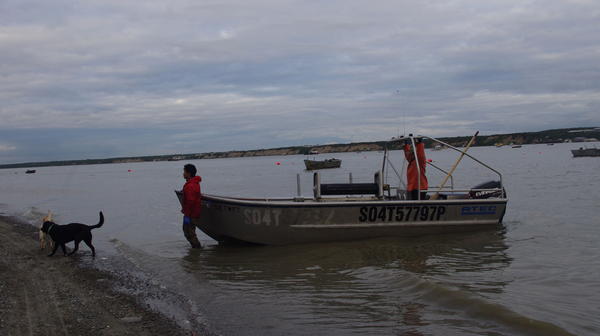 The48-hour waiting period to transfer into the Naknek-Kvichak, Egegik, Ugashik and Nushagak Districts ends by regulation July 17, but it’s waived as of Tuesday for the Naknek-Kvichak and Egegik District. Fishermen can’t transfer into the Togiak District after fishing any other district until July 27. Catches declined slightly on Monday, but are still among the highest of the season with 1.8 million fish caught that day, bringing the baywide catch to about 22.8 million, with the total sockeye run estimated at 33.7 million fish. From aboard the F/V Crimson Hunter,,, Read the rest here 19:10
The48-hour waiting period to transfer into the Naknek-Kvichak, Egegik, Ugashik and Nushagak Districts ends by regulation July 17, but it’s waived as of Tuesday for the Naknek-Kvichak and Egegik District. Fishermen can’t transfer into the Togiak District after fishing any other district until July 27. Catches declined slightly on Monday, but are still among the highest of the season with 1.8 million fish caught that day, bringing the baywide catch to about 22.8 million, with the total sockeye run estimated at 33.7 million fish. From aboard the F/V Crimson Hunter,,, Read the rest here 19:10
Bristol Bay fishery Saturday update – Naknek-Kvichak netted 1.1 million yesterday, it’s biggest catch to date.
The Bristol Bay fishery continues to show signs of building towards either a peak or a long tail end with another day of big catches Friday. Naknek-Kvichak netted 1.1 million yesterday, it’s biggest catch to date. KDLG reports that some processors had already started letting people go because of the smaller-than-forecast run. Activity at the Bristol Bay Port is ramping up, though. “In the last 24 hours we’ve taken in 98 reefers of salmon,” said Robert “Herk” McDermott, the port manager, speaking Friday. For context, he said 139 was the most they had ever moved in a 24-hour period. Read the rest here 10:38
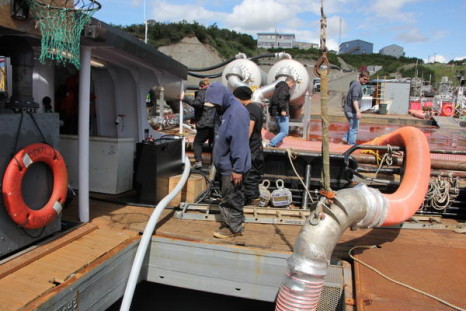
Bristol Bay run nears 20 million sockeye
Yesterday fishermen in Bristol Bay hauled in their biggest catch to date – landing about 1.7 million sockeye, including 1 million harvested out of the Naknek-Kvichak district. The total run to Bristol Bay now stands at about 20 million sockeye, which is still well below the forecast … but Port Moller’s test fishery says catches the last two days are near the highest of the season. Listen, Read the rest here 17:26
By road, lake and river: Part II – From the braids of the Kvichak to shores of Bristol Bay – Molly Dischner
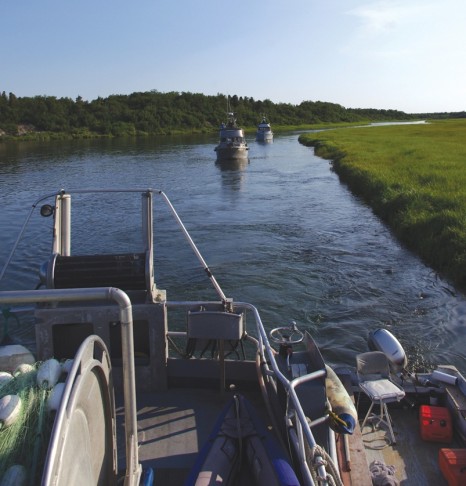 Editor’s note: This is the second of two parts (part 1 here) in reporter Molly Dischner’s journey with a Homer fishing family to Bristol Bay on the eve of sockeye season. About 8 a.m. on June 17, a sportfishing guide tied his skiff to the F/V Eagle Claw and hopped onboard to join our motley crew. It was the final day of our five-day trip from Homer to Naknek via the Williamsport Road. Skipper Louie Flora, his daughter Sidney and brother Jonathan were headed to fish the east side of Bristol Bay. Soon-to-be west side setnetter Joey Kraszeski and I were just along for the ride. Read the rest here 18:23
Editor’s note: This is the second of two parts (part 1 here) in reporter Molly Dischner’s journey with a Homer fishing family to Bristol Bay on the eve of sockeye season. About 8 a.m. on June 17, a sportfishing guide tied his skiff to the F/V Eagle Claw and hopped onboard to join our motley crew. It was the final day of our five-day trip from Homer to Naknek via the Williamsport Road. Skipper Louie Flora, his daughter Sidney and brother Jonathan were headed to fish the east side of Bristol Bay. Soon-to-be west side setnetter Joey Kraszeski and I were just along for the ride. Read the rest here 18:23
Bristol Bay Fisheries Report June 21, 2015 with KDLG’s Molly Dischner
 Today we hear the news the westside has been waiting for – setnets are going in the water – and take a trip from Kachemak Bay to Bristol Bay. A look at Sunday’s catch and escapement numbers, an interview with area managers from both sides of the bay, and a journey from Kachemak Bay to Bristol Bay. That, plus a conversation about fisheries research with UW’s Daniel Schindler. Listen to the report here 19:03
Today we hear the news the westside has been waiting for – setnets are going in the water – and take a trip from Kachemak Bay to Bristol Bay. A look at Sunday’s catch and escapement numbers, an interview with area managers from both sides of the bay, and a journey from Kachemak Bay to Bristol Bay. That, plus a conversation about fisheries research with UW’s Daniel Schindler. Listen to the report here 19:03
By road, lake and river: Boats make way to Bristol Bay – Molly Dischner
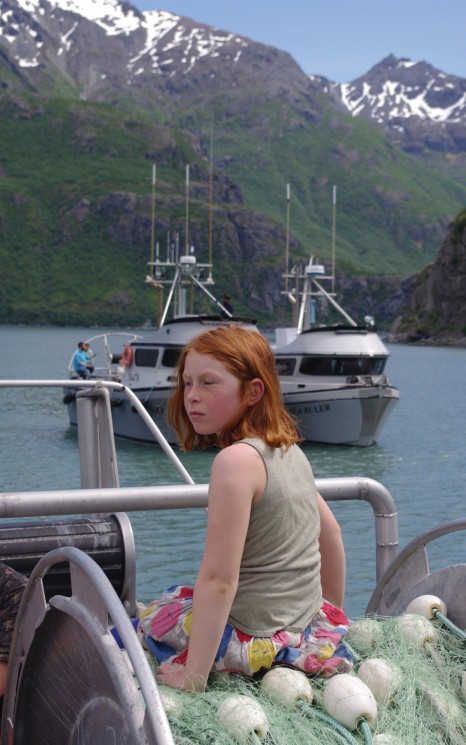 Editor’s note: This is the first of two parts in reporter Molly Dischner’s journey with a Homer fishing family to Bristol Bay on the eve of sockeye season. PILE BAY – It’s noon, Iliamna Lake is calm, and half a dozen fishermen are sitting around in the grass outside the bathroom at Pile Bay using free Wi-Fi. A soon-to-be setnetter makes a Facebook page for another fisherman. His brother (and this reporter) pitch in with photos and suggestions for friends. The three of us are riding to Naknek with Louie Flora and his daughter Sidney onboard the F/V Eagle Claw. Read the rest here 13:07
Editor’s note: This is the first of two parts in reporter Molly Dischner’s journey with a Homer fishing family to Bristol Bay on the eve of sockeye season. PILE BAY – It’s noon, Iliamna Lake is calm, and half a dozen fishermen are sitting around in the grass outside the bathroom at Pile Bay using free Wi-Fi. A soon-to-be setnetter makes a Facebook page for another fisherman. His brother (and this reporter) pitch in with photos and suggestions for friends. The three of us are riding to Naknek with Louie Flora and his daughter Sidney onboard the F/V Eagle Claw. Read the rest here 13:07
Bristol Bay Fisheries Report June 2, 2015 with Molly Dischner
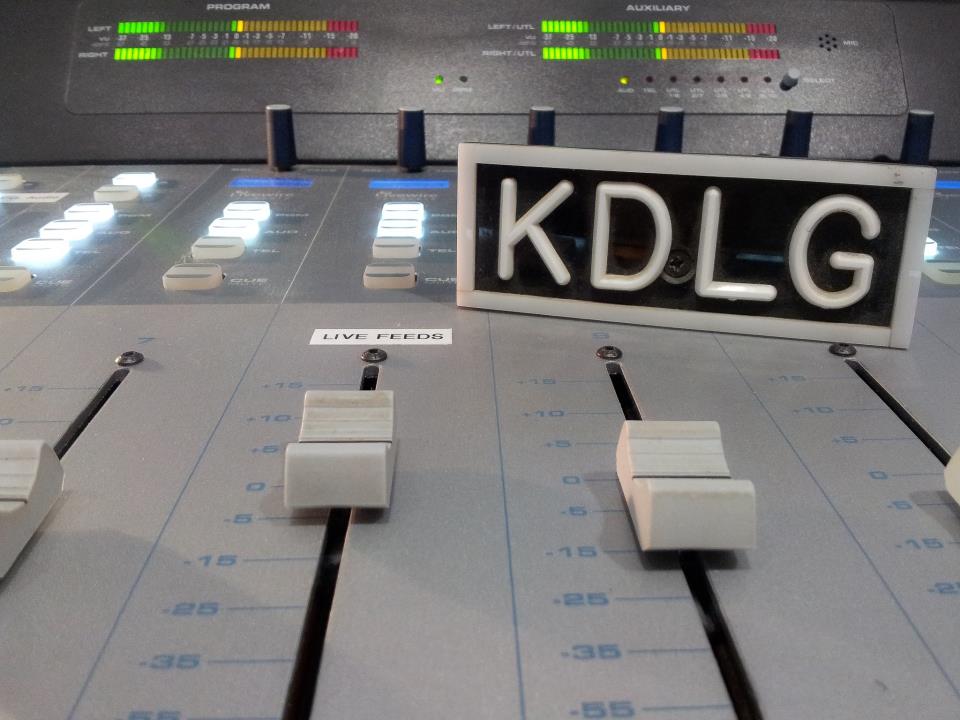 KDLG’s Molly Dischner has June 2’s Bristol Bay Fisheries Report. Listen here for a conversation with ADFG Area Manager for the Naknek-Kvichak District Travis Elison, an update from Copper River Seafoods’ Bristol Bay Manager Vojta Novak about the new plant in Naknek, info on the local halibut and herring fisheries, and other news. Listen to the report here 19:23
KDLG’s Molly Dischner has June 2’s Bristol Bay Fisheries Report. Listen here for a conversation with ADFG Area Manager for the Naknek-Kvichak District Travis Elison, an update from Copper River Seafoods’ Bristol Bay Manager Vojta Novak about the new plant in Naknek, info on the local halibut and herring fisheries, and other news. Listen to the report here 19:23
Bristol Bay’s halibut fishery is underway!

“There are halibut around and people are beginning to catch them,” said Susie Jenkins-Brito, the regional fisheries coordinator for the Bristol Bay Economic Development Corp. Jenkins-Brito said the group had its first report of halibut caught in the area on May 22, and other fishermen in the area have started going out to catch halibut as well. There are 28 fishermen who have permits to harvest BBEDC’s quota in the area on longline vessels, out of 35 who initially applied. Read the rest here 18:20
Alaska fishermen consider leaving Copper River/Prince William Sound Marketing Association
In 2005, the fleet of Prince William Sound fishermen who hang curtain-like nets from their boats to catch salmon voted to assess itself a 1 percent tax to fund Alaska’s first regional seafood development association. The fishermen who let out nets from shore joined in 2009. The Copper River/Prince William Sound Marketing Association has since helped boost earnings for the two groups – the drifters and setnetters – by creating brand-name recognition for their fish. It also helped raise the price of the region’s sockeye to the highest in the state. Read the rest here 09:33
Upping their groundfish game
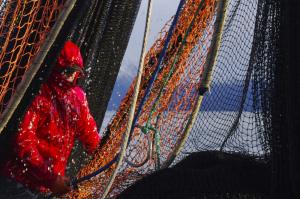 Despite more than thirty years of fishing around Alaska, Kasilof fisherman Rob Nelson had never let out a net hoping to catch pollock before December. But the long-time seiner has been learning how to catch the groundfish in Kachemak Bay as part of an experimental fishery this winter. In most of Alaska, pollock are caught by trawlers. But Nelson and other fishermen are hoping that seines could provide a way to safely catch the fish, without worrying about bycatch. Read the rest here 08:39
Despite more than thirty years of fishing around Alaska, Kasilof fisherman Rob Nelson had never let out a net hoping to catch pollock before December. But the long-time seiner has been learning how to catch the groundfish in Kachemak Bay as part of an experimental fishery this winter. In most of Alaska, pollock are caught by trawlers. But Nelson and other fishermen are hoping that seines could provide a way to safely catch the fish, without worrying about bycatch. Read the rest here 08:39
Cook Inlet fish wars dominate headlines again in 2014
 The Upper Cook Inlet fisheries were tense in 2014, with an emotional Board of Fisheries meeting in the winter and new restrictions in the summer. Alaska’s Board of Fisheries met in Anchorage in late January and early February to discuss management plans for Upper Cook Inlet. By the end of the two-week meeting, the board for the first time approved changes that paired restrictions for sport and commercial fishermen. Read the rest here 17:07
The Upper Cook Inlet fisheries were tense in 2014, with an emotional Board of Fisheries meeting in the winter and new restrictions in the summer. Alaska’s Board of Fisheries met in Anchorage in late January and early February to discuss management plans for Upper Cook Inlet. By the end of the two-week meeting, the board for the first time approved changes that paired restrictions for sport and commercial fishermen. Read the rest here 17:07
Dischner: Another year of halibut quota cuts on the table for 2015 (lots of info)
 Pacific halibut fishermen could have a reduced catch next year if the International Pacific Halibut Commission opts to go with the “blue-line” projection released Dec. 2, but Alaskan fishermen in some areas may see a slightly higher quota than in 2014. The blue-line projection calls for a coastwide catch of about 25.02 million pounds million pounds, and total fishery removals of 38.72 million pounds. Read the rest here 13:12
Pacific halibut fishermen could have a reduced catch next year if the International Pacific Halibut Commission opts to go with the “blue-line” projection released Dec. 2, but Alaskan fishermen in some areas may see a slightly higher quota than in 2014. The blue-line projection calls for a coastwide catch of about 25.02 million pounds million pounds, and total fishery removals of 38.72 million pounds. Read the rest here 13:12
Observer changes, Gulf ratz on tap for North Pacific council
 Changes to the observer program and discussion of a possible Gulf of Alaska rationalization program are back on the menu at the North Pacific Fishery Management Council’s October meeting. The council, which will meet Oct. 8-14 in Anchorage, will also approve crab fishery catches, take final action on Pacific cod fishery for the Community Development Quota, or CDQ, fleet and take action on Bering Sea crab fishery provisions. Read the rest here 14:20
Changes to the observer program and discussion of a possible Gulf of Alaska rationalization program are back on the menu at the North Pacific Fishery Management Council’s October meeting. The council, which will meet Oct. 8-14 in Anchorage, will also approve crab fishery catches, take final action on Pacific cod fishery for the Community Development Quota, or CDQ, fleet and take action on Bering Sea crab fishery provisions. Read the rest here 14:20
Alaska’s Board of Fisheries releases 2014-2015 proposal book
Fishermen and other stakeholders are asking Alaska’s Board of Fisheries to consider 162 proposals to change subsistence, commercial, personal use and sport regulations in fisheries throughout the state during the 2014-2015 meeting cycle. Read more here 18:55
Russian bans add to uncertain picture for salmon prices
Alaska’s commercial fishermen have hauled in more than 125 million salmon this year, but the prices for those fish are still in limbo. Russia’s recent ban on imports from the United States, Canada, Norway and other countries could affect the price for Alaska salmon, however. Read more here 22:58
King concerns drive Cook Inlet fisheries
![]() Strong sockeye returns and low king numbers continue to drive the interplay of several Cook Inlet fisheries. Sport, commercial and personal-use fishermen all target Cook Inlet sockeyes. They also catch king salmon. Lots of info here, but we can expect that from Alaska fish reporter,Molly Dischner , Read more here 17:20
Strong sockeye returns and low king numbers continue to drive the interplay of several Cook Inlet fisheries. Sport, commercial and personal-use fishermen all target Cook Inlet sockeyes. They also catch king salmon. Lots of info here, but we can expect that from Alaska fish reporter,Molly Dischner , Read more here 17:20






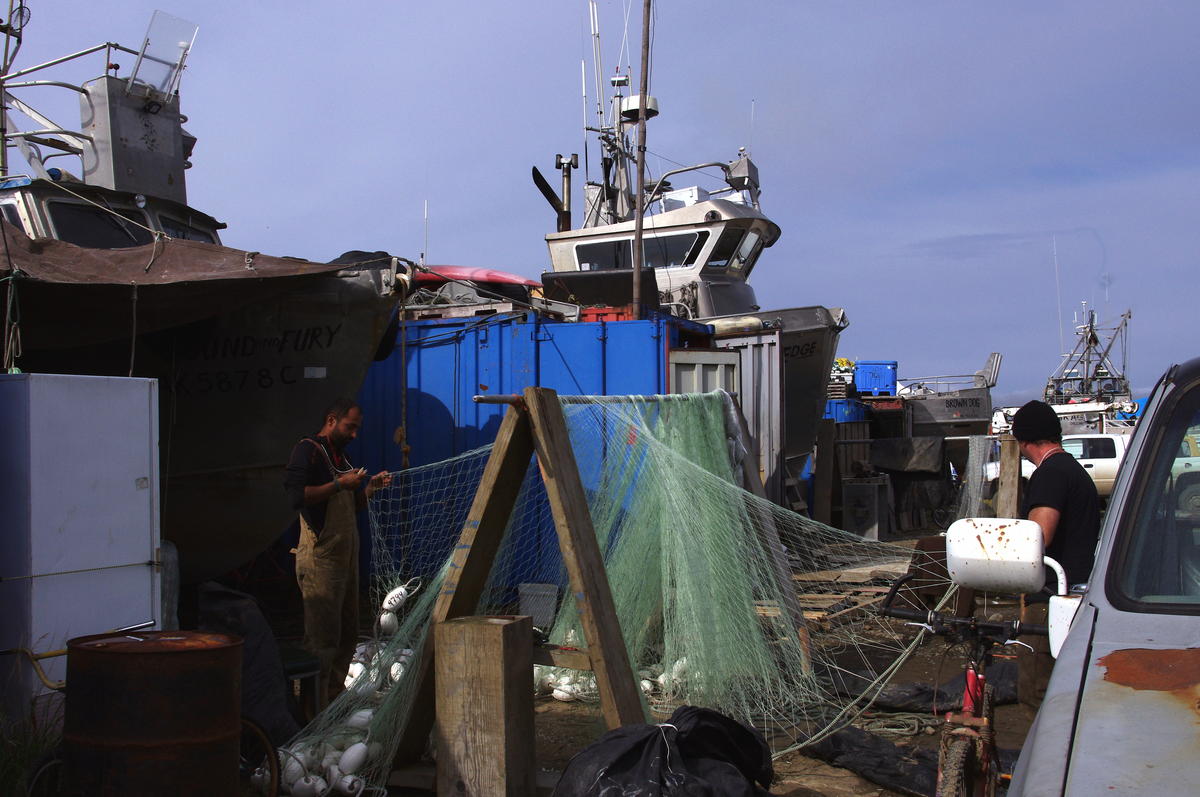 A group of researchers is trying to figure out what draws people to the Bristol Bay fishery and what new entrants need to get involved. For students in the region, they’re finding that it’s often all about family. Coleman has also been interviewing fishermen in those same communities, greenhorns and old hands alike, to find out why they put a net in the water – and what makes it possible for them to do so. Most of her work so far has focused on people who live in the region.
A group of researchers is trying to figure out what draws people to the Bristol Bay fishery and what new entrants need to get involved. For students in the region, they’re finding that it’s often all about family. Coleman has also been interviewing fishermen in those same communities, greenhorns and old hands alike, to find out why they put a net in the water – and what makes it possible for them to do so. Most of her work so far has focused on people who live in the region. 

























